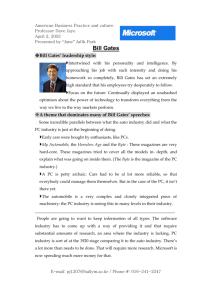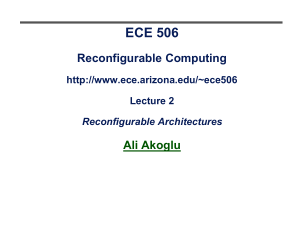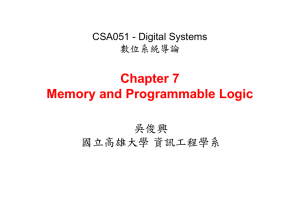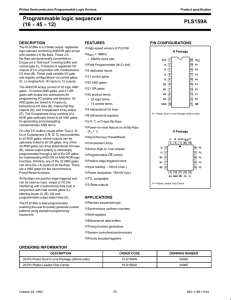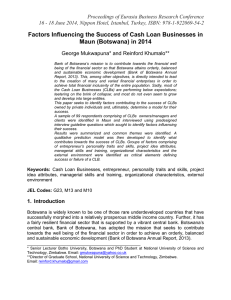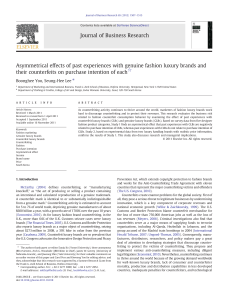Unit 9 Multiplexers, Decoders, and Programmable Logic Devices
advertisement
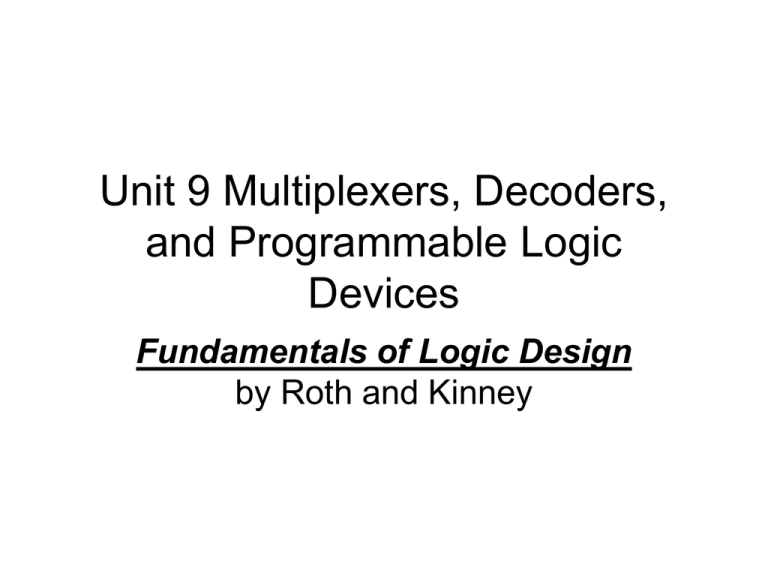
Unit 9 Multiplexers, Decoders, and Programmable Logic Devices Fundamentals of Logic Design by Roth and Kinney 9.1 Introduction • SSI—small scale integration – NAND,NOR,AND, and OR, inverters, and flip-flops (14 gates, 6 inverters, 1 or 2 flip-flops); in a single pkg • MSI—medium-scale integration – Adders, Multiplexers, Decoders, Registers, and Counters(12-100 gates—in a single package) • LSI—large –scale integration (memories or microprocessors) (100-few thousand gates; in a single package) • VLSI—very large scale integration (memories or microprocessors) (several thousand gates or more in a single package). 9.1 (cont.) • Cost tends to decrease when LSI and VLSI circuits are used (wiring, mounting, and maintaining designs.) • Design trends—LSI and VLSI. 9.2 Multiplexers • Data inputs and control inputs. • The control inputs are used to select one of the data inputs. – See Figures 9-1 and 9-2. – Note that the output Z of the 4 x 1 multiplexer is Z= A’B’I0 + AB’I1 +AB’I2 + ABI3 9.2 (cont.) • Equation 9-2 –shows output Z for an 8x1 multiplexer. • Figure 9.3—Logic diagram for 8 to 1 Mux. – NAND or NOR gates can be used . – 2-levels shown • Figure 9-4—Multi-Level 8 to 1 Mux using NANDS. • Figure 9-9 illustrates the MUX used to implement a simple function. 9.3 Three-State Buffers • A simple buffer can be used to increase the driving capability of a gate output. – See Figure 9.10, page 266. • A three-state (tri-state) buffer allows the outputs of two or more gates to be connected together. – See Figure 9-11; when the control “B” is 0 the output will have a high inpedence. 9.4 Decoders and Encoders • Figure 9-17 3-5o-8 line decoder – Generates all of the minterms. – Only one output will be high for each combination of the input variables. 9.4 (cont.) • Figure 9-18 A 4 –to- 10 line decoder (7442) – (a) Logic diagram – (b) Block diagram – (c) Truth Table (one output will be a 0) – Binary coded decimal are used as the input. 9.4 (cont.) • An encoder performs the inverse function of a decoder (Figure 9.20). 9.5 Read-Only Memories • ROM—read only memory; used to store data. – Figure 9-21 – An 8-word x 4 bit ROM. • (a) Block Diagram • (b) Truth Table 9.6 Programmable Logic Devices • PLD—programmable logic device– a digital integrated circuit capable of being programmed to provide a variety of different logic functions. • PLA—programmable logic array – Similar in function to a ROM 9.7 Complex Programmable Logic Devices • CPLD—many PLAs can be placed today on a single chip. • Figure 9-34—Architecture of Xilinx XCF3064XL CPLD. 9.8 Field-Programmable Gate Arrays • FPGA—an IC that contains an array of identical logic cells (configurable logic blocks) with programmable interconnections. (See Figure 9-36) – Array of CLBs is surrounded by I/O blocks. – The I/O blocks connect the CLBs with the pins of the FPGA chip. – The space between CLBs is used to route the connections between the CLB outputs and inputs. 9.8 (cont.) • Simplified CLB—Figure 9-37 – 2 “function generators” of logic lookup Tables (LUTs) • LUTs—reprogrammable ROMs (16 1-bit words • LUTs—store the truth table of the function being implemented. – 2 flip-flops ( outputs XQ and YQ) – Multiplexors (for routing signals) • H chooses between F and G. • Selects combinational logic outputs, X and Y.

